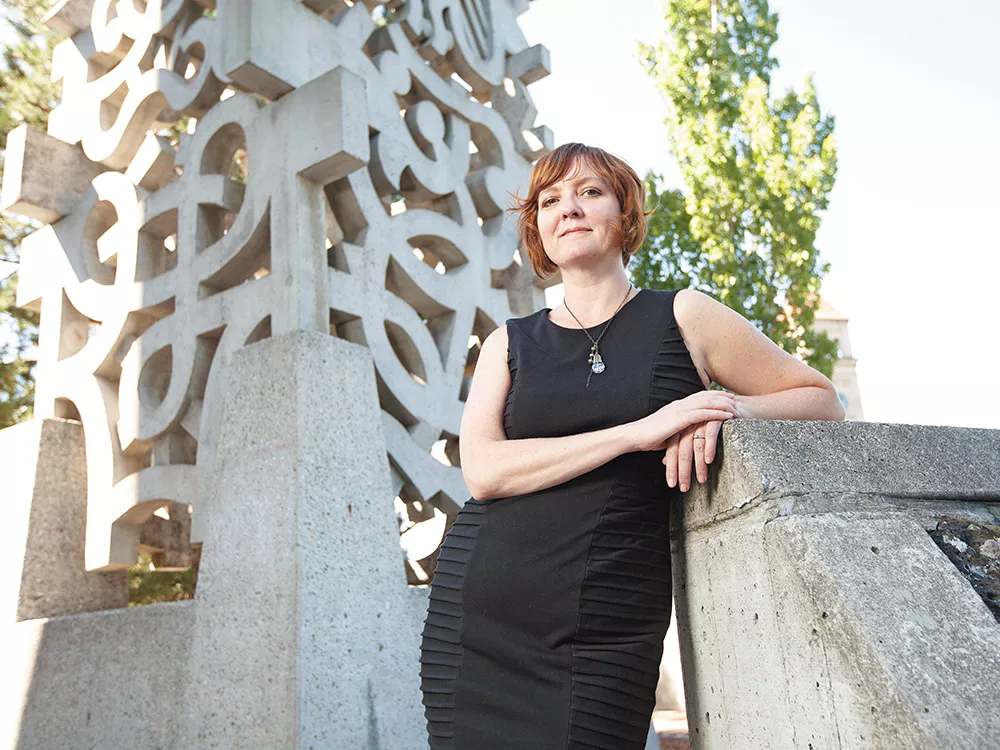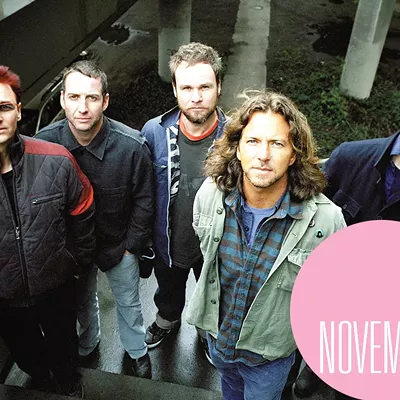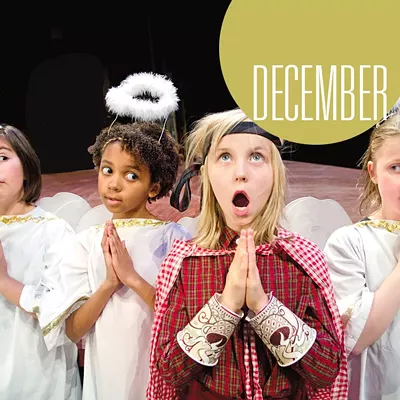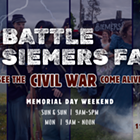Shannon Roach Halberstadt is new to Spokane, but she’s already proud to be here. On a recent chilly morning, she’s wearing a denim jacket — one that already has a metal Spokane Expo ’74 pin affixed to the collar.
Halberstadt isn’t even on the job yet as the new executive director of the Spokane Arts Fund — she’s finishing up her position this week with the Pacific Northwest Chapter of the National Academy of Recording Arts & Sciences (which helps put on the Grammy awards) — but she’s already immersing herself in Spokane’s culture. She’s bought new records at local shops, eaten out at Mizuna and Santé, sipped coffee at the Rocket, watched the Terrible Buttons play at nYne and rocked out to the Postal Service at the Knitting Factory.
Her move to Spokane and finding a job in arts administration here was all serendipitous. As a longtime Seattle resident who was a vital part of the art and music scene there, she says she was planning to move to Spokane “for love.” She would be with her husband, but, as an arts administrator, she wasn’t sure where she would land professionally. But then the position with the Spokane Arts Fund opened up. She applied. And she landed it.
Halberstadt’s entrance onto the Spokane arts stage is a highly anticipated one, and not only because of her extensive résumé. She’s worked on the front lines of the Seattle arts scene through grassroots movements and nonprofit organizations. She’s not a stuffy arts gazer: She came up in the underground music scene, has posters of hardcore bands in her house and truly believes that art is vital to a city’s identity. To her, a vital arts scene is everything from white-walled galleries to gritty punk clubs.
After working at the University of Washington’s Henry Art Gallery and as the house manager at On the Boards theater, Halberstadt quickly became known for her work in the underground music scene in Seattle — particularly at Redmond’s Old Firehouse and as the managing director of the Vera Project, a nonprofit, all-ages music venue.
“Especially in the ’90s and early 2000s, there was a lot of stigma against popular music and young people and everything else,” she says. The Firehouse and the Vera Project were “intentionally breaking down those barriers.”
At those venues, Halberstadt and her colleagues focused on connecting with youth through art — and not just the traditional mediums. In addition to hosting live music, the venues hosted silkscreening workshops, graffiti classes, photography instruction. And the venues trusted kids, depending on youth volunteers to even be able to operate: Kids ran sound, took tickets and cleaned up after shows.
In the 1990s, Halberstadt was on the front lines of a fight against the infamous Teen Dance Ordinance, which gouged so deep into the all-ages music scene, it threatened its existence altogether. But through the Vera Project, she helped forge relations with government officials skeptical of why punk rock was so vital to the city’s identity.
Roach says the groundwork is already laid in Spokane for the arts scene to explode — she says amazing work has been done here by the Arts Fund and city Arts Commission. And there’s tons of talent.
“I don’t think I need to tell you that there’s no shortage of creativity here. People are making really great art, really great music, really great visual art, good performance — across the board, it’s good stuff,” she says. “I think we can really start to articulate the impact of how arts are a part of Spokane’s identity, and how arts can really help to make Spokane a great place to live, a great place to work, a great place to attract talent.”
She says part of her initial work will be creating strategic plans for the Spokane Arts Fund and figuring out how to creatively match art with economic development, education and civic engagement.
“How can we make sure that art is a part of all of these conversations, so it becomes part of the overall identity of Spokane? So it’s just integrated — it’s part of every conversation, it’s part of what people think of when they think of Spokane,” she says.
Her longtime home of Seattle eventually came to realize that punk rock was a part of what made the city so special. She thinks she can help make something similar happen in Spokane. “That’s not easy to do. … How do we make arts, just — indispensable? Part of the fabric of who we are?” she says. “I think that shift takes time.”
She’s nothing but optimistic. She already sees that Spokane is something special.
“We need to brag outside of our borders,” she says. “I think that Spokane could be a really good lesson in mid-sized cities and the arts.”




















